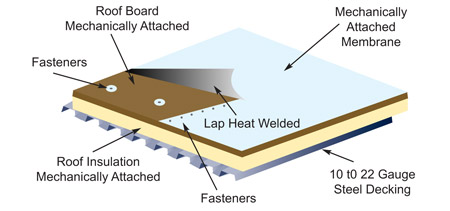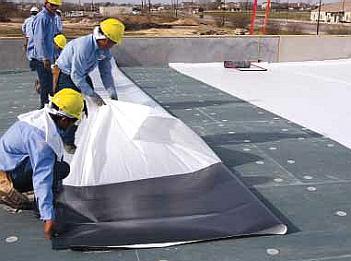Bring in a roofing contractor to perform an inspection once or twice a year to ensure that the membrane is holding up and not worn or damaged in areas.
Ponding test for roof membranes.
This astm testing procedure utilizes a calibrated spray rack with specific water pressures nozzles and distances to wet a wall with water at the rate of five gallons per square foot per hour.
You can also perform preventative maintenance to ensure that the membrane stands the test of time.
Ponding water isn t an immediate threat in fact roof membranes are made with the same material as pond liners so water penetration is unlikely.
1 1 this test method covers the determination of water migration resistance of roof membranes including built up roof membranes modified bitumen and single ply roof membranes.
The procedures were developed to determine the potential for leakage of water through the roof membranes resulting from a standing head of water and when pressurized with air from the underside.
Over time however ponding water can lead to accelerated aging of the roof membrane.
Ponding test is the application of static pressure by pounding water on the internal face.
Bathrooms tiles typically face water seepage which lead to the formation of molds and dripping from the ceilings of the floor below.
Another problem that can be combated with frequent inspections compressed insulation can be another leading cause of ponding water on your commercial roof.
The testing is done to check for any colored water leakages.
You can also have serious issues with your roof if that insulation.
Astm e1105 and aama 501 2 test methods are good overall methods commonly used to test exterior walls sloped glazing and shallow pitched roofs to help identify leak sources.
When can it damage the roof.
D5957 98 2013 standard guide for flood testing horizontal waterproofing installations installation waterproofing membranes watertightness flood test.









